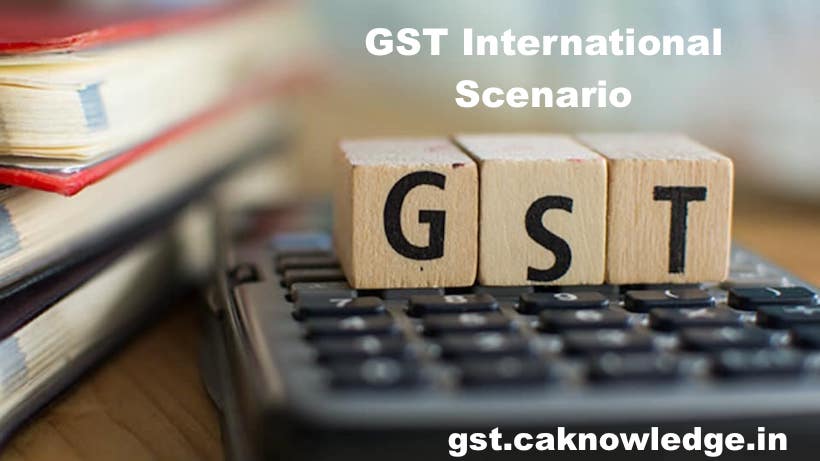GST International Scenario and Models of GST in various Countries:Internationally, countries are moving towards simplification of tax structures. The adoption of Goods and Services Tax has been the most important development in several countries over the last half-century. Today, it is one of the widely accepted indirect taxation system prevalent in more than 140 countries across the globe. Globally, GST has been structured as a destination based comprehensive tax levied at a specified rate on sale and consumption of goods and services within a country. It facilitates creation of national tax standards with consumers paying uniform rates of GST, thereby enabling flow of seamless credit across the supply chain.
GST International Scenario
GST was first levied by France in 1954. Today, Malaysia is the most recent country to join the bandwagon. In countries where GST has been adopted, manufacturers, wholesalers, retailers and service providers charge GST at the specified rate on price of the goods and services from consumers and claim input credits for GST paid by them on procurement of goods and services (raw material).
Globally, the broad principles of GST are as under:
- GST is a broad-based tax
- GST is a destination based tax
- GST is technically paid by suppliers but it is actually funded by consumers
- GST is collected through a staged process i.e. a tax on the value added to goods or services at every point in the supply chain
- GST is a tax on the consumption of products from business sources, and not on personal or hobby activities
- Under GST, input tax credit is provided throughout the value chain for creditable acquisition.
Models of GST
Although most countries have adopted similar principles of GST, there remain significant differences in the way it is implemented. These differences result not only from the continued existence of exemptions and special arrangements to meet specific policy objectives, but also from differences of approaches in the definition of the jurisdiction of consumption and therefore of taxation. In addition, there are a number of variations in the application of GST, and other consumption taxes, including different interpretation of the same or similar concepts; different approaches to time of supply and its interaction with place of supply; different definitions of services and intangibles and inconsistent treatment of mixed supplies.
Advertisement
Content in this Article
Different countries follow different model of GST based upon their own legislative and administrative structure and their requirements. Some of these models are:
- Australian Model wherein, tax is collected by the Centre and distributed to the States
- Canadian Model wherein there are three variants of taxes
- Kelkar-Shah Model based on Canada Model wherein taxes are collected by the Centre however, two different rates of tax are to be levied by the Centre and the States and
- Bagchi-Poddar Model which envisages a combination of Central Excise, Service Tax and VAT to make it a common base of GST to be levied both by the Centre and the States separately.
Most countries follow a unified GST regime. However, considering the Federal nature of Indian Constitution, dual model of GST was proposed, where the power to levy taxes would be subjectively distributed between Centre and States thus, GST will be levied by both, the Centre as well as the States and there will be separate levies in the form of Central Goods and Services Tax (CGST), State Goods and Services Tax (SGST) and Integrated Goods and Services Tax (IGST) enabling the tax credit across these three variants of taxes. Currently, Brazil and Canada also follow dual GST model.
GST in India
GST is one of the biggest taxation reforms in India aiming to integrate State economies and boost overall growth by creating a single, unified Indian market to make the economy stronger. GST is a comprehensive destination based indirect tax levy of goods as well as services at the national level. Its main objective is to consolidate multiple indirect tax levies into a single tax thus subsuming an array of tax levies, overcoming the limitations of existing indirect tax structure, and creating efficiencies in tax administration.
Recommended Articles
- Zero Rated Supplies
- GST Rates
- GST Updates
- GST Questions Related to Pharma Sector
- GST Questions Related to Handicrafts Business
- GST Questions Related to Mining business
- Important Definitions

